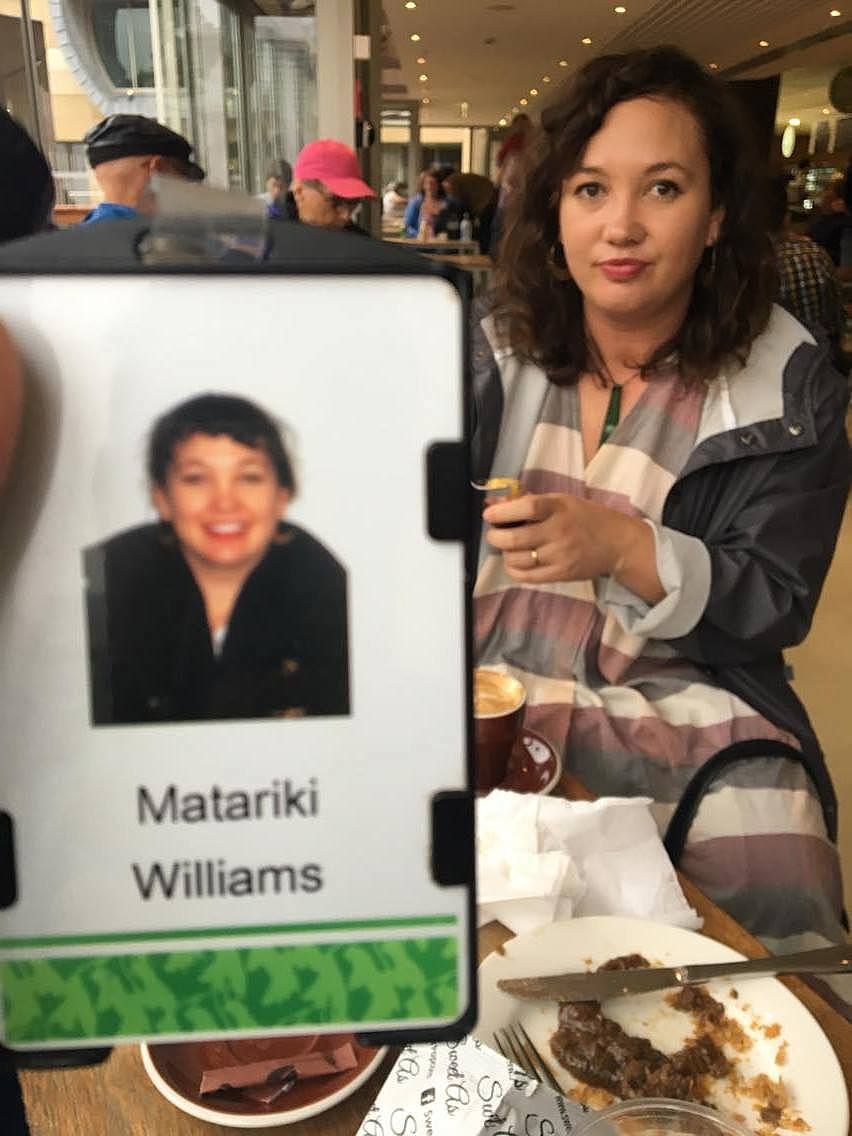A State of Disconnection: The Human Alien Relationship of Turncoat
What if Pākehā were subjected to the same colonisation as Māori? Matariki Williams travels into the sci-fi world of 'Turncoat' - where an all-too-familiar narrative of colonisation plays out amongst aliens and humans.
Turncoat by Tīhema Baker (Raukawa au ki te Tonga, Ātiawa ki Whakarongotai, Ngāti Toa Rangatira) is a satirical sci-fi novel set in a universe where humans have been colonised by aliens – aliens who constantly breach the document that fundamentally binds them, the Covenant of Wellington. The Covenant is one of many parallels between the world of Turncoat and our world, in that it is their version of te Tiriti o Waitangi. The parallel being made is that the colonised humans of Turncoat are subject to the same colonisation Māori have experienced in the real world. Indeed, the protagonist Daniel is based in part on Baker’s own experiences, as he has worked as a public servant, including as a Tiriti o Waitangi-based policy advisor.
The cover of Turncoat features an installation view of artist Tiffany Singh’s work Total Internal Reflection (2018). The work, commissioned by Te Papa, invited participation from visitors, who would select a coloured button before entering a largely empty room and being bathed in light of the chosen colour. Singh has described her intention for the work as follows: “I hope it is an uplifting experience similar to standing in a ray of light coming through a cathedral window, a heightened sense of being connected to something greater than self.” Centred on Turncoat’s cover is a toddler, mid-stride in gumboots and wearing a backpack. They look like a tiny astronaut in the vastness of space. The rainbow light of Singh’s work casts an eerie presence at the intrepid traveller’s feet.
We meet Turncoat’s protagonist, Daniel, as he is about to commence working for the Hierarch, the alien government, a role he takes to with the fresh-faced naivety of any public servant straight out of university, hoping to make positive change. In the opening pages we also meet his friend Hayden, who leads a much less blessed life, circumstances having led him and his widowed father into cycles of desperation and hardship where much of their frustration is concentrated on the alien government and their marginalisation of humans. An all-too-familiar parable in Aotearoa, sure, but one in which Hayden doesn’t just act as Daniel’s conscience but also provides an insight into life for those whom this new world has forgotten.
From interviews Baker has given about his writing process, it appears that he, too, was seeking connection, if not catharsis, through writing this book. As a reader who is also Māori and last year left the public service, where I had been a project lead for a te Tiriti o Waitangi history programme that worked directly with te Tiriti claimant partners, I can certainly empathise with Baker’s experience and need for release. Daniel’s experiences would be the same as many Māori who work in the public service: the mispronounced names, butchering of te reo Māori, recitation of karakia by rote, singing waiata with little understanding of their meaning and why they are being sung. Daily microaggressions are one of the only constants that Māori in the public service can count on. However, this also points to my issue with satire and with the use of experience as a facsimile like this – once the conceit is known, it risks feeling superficial if there isn’t further world-building added.
Admittedly, it took a while for me to push through the world of Turncoat to get to that depth – a treaty by any other name would still be breached, and all that. The depth I was seeking came as Baker fleshed out the look of this world and the social hierarchy that governs it (quite literally, with the ruling alien government being called the Hierarch). In many ways, the idea of Rank and ascending up Rank in the Hierarch recalls the ‘Nosedive’ episode of Black Mirror, in which members of society rate one another on social media. Although Rank isn’t so overtly moderated in Turncoat, the panopticon-like mentality of the world means that all humans and aliens are aware of how their behaviours can affect their Rank, and thus it is moderated.
While I enjoyed the descriptions of an apocalyptic Wellingtonian future and an Earth whose sky is obscured by introduced alien structures, it was the complexity of the relationships that struck me the most. His friendship with Hayden, whose societal rank is poor compared to Daniel’s, challenges Daniel’s allegiances and queries his loyalty to humans. In parallel to this is a burgeoning relationship with an alien colleague, Neekor, where they mediate their differences together, resulting in some shared understanding and other areas that do not compute. There is a fundamental chasm between the humans and aliens in the book, first mentioned in the opening pages and explored in more depth as Daniel and Neekor negotiate the traits they’d like to pass on to any future uri. The aliens’ deficit of emotional intelligence means they don’t have the same kind of understanding of how history shapes their interactions. This emotional chasm recalls the use of Singh’s work on the cover; the very lack of connection that aliens have to something greater than themselves, and how elemental this connection is for humans, will always underscore their interactions with each other.
Here I want to touch upon the intended audience for this book. Baker has mentioned he wants Pākehā and Tauiwi public servants to read Turncoat, stating in an interview with RadioActive about the public service that “It’s full of people who mean well, that’s the whole reason they’re there, right, is to serve the people. They mean well, but white fragility is a really difficult thing to combat. People don’t like to be told that they may not be doing the right thing when they think they are.”
There is so much pressure on Māori having to communicate to non-Māori public servants just how they may have messed up. ‘Well meaning’ can be coded as ‘unintended’; ‘may not be doing the right thing’ can be read as ‘definitely doing the wrong thing, but how will I be perceived if I bring it up?’; ‘they think they are’ could be interpreted as ‘at least it’s good they are trying, I guess’. In every way, microaggressions can be dismissed as excusable, difficult to quantify, and even more difficult to justify raising as an issue to oblivious, often non-Māori managers. This is all to say, Māori public servants know the score. So is this book for us? I don’t know. Because I’ve been Daniel. This narrative isn’t new to me, in fact it is so familiar that it fuelled a lot of the same emotions Daniel exhibits and, ultimately, we ended up in the same space. Is Turncoat for non-Māori public servants? Absolutely. But will it be read by the ones who need to read it? Do they ever? God, my cynicism from working for the state is evidently still present.
I am left thinking that the most important question for readers is whether a settler-colonial state will ever serve the colonised. Turncoat’s high-ranking humans face this moral quandary and this ends up being the most incisive and caustic critique in the book. It is a brief scene of confrontation before the high-ranking human turns their back on Daniel to continue with their mahi. Ultimately, Turncoat left me with many more questions, the most important being: Is it better to be in or out?

